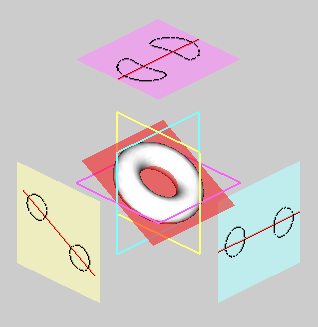Combining 2D and 3D Views for Orientation and Relative Position Tasks

We compare 2D/3D combination displays to displays with 2D and 3D views alone. Combination displays we consider are: orientation icon (i.e., side-by-side), in-place methods (e.g., clip planes), and a new method called ExoVis. We specifically analyze performance differences (i.e., time and accuracy) for 3D orientation and relative position tasks. Empirical results show that 3D displays are effective for approximate navigation and relative positioning whereas 2D/3D combination displays (orientation icon and ExoVis) are useful for precise orientation and position tasks. Combination 2D/3D displays had as good or better performance as 2D displays. Clip planes were not effective for a 3D orientation task, but may be useful when only one slice is needed.
 Top
Top
- Tory, Melanie
- Möller, Torsten
- Atkins, M. Stella
- Kirkpatrick, Arthur E.
 Top
Top
Category |
Paper in Conference Proceedings or in Workshop Proceedings (Full Paper in Proceedings) |
Event Title |
ACM Conference on Human Factors in Computing Systems (CHI 2004) |
Divisions |
Visualization and Data Analysis |
Subjects |
Computergraphik |
Event Location |
Vienna |
Event Type |
Conference |
Event Dates |
April 24-29 |
Date |
April 2004 |
Export |
 Top
Top




